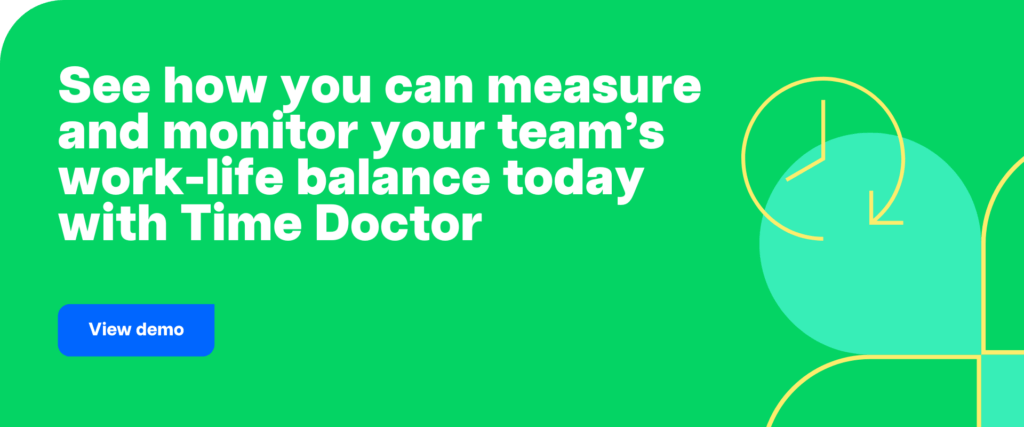Employee retention is a complex issue. There are a multitude of factors at play, and those factors are changing as work is changing. The current employee retention statistics show that HR and managers must rethink retention strategies. Classic approaches aren’t working, but employees respond well to personalized and empathetic leadership.
We’ve identified key themes in employee retention statistics that highlight the challenges and help managers make targeted decisions.
Understanding these factors will help HR professionals and managers foster a positive work environment, invest in employee development and create a culture of engagement.
Ultimately, we want to help effective leaders boost employee retention and build a future-ready workforce.

Employee retention at a glance
- 51% of employees globally are watching for or actively seeking a new job, signaling high levels of potential turnover across the board.
- 53% of employees globally think now is a good time to find a job, reflecting a market dynamic where opportunities are plentiful, potentially increasing turnover intent.
- 62.5% of all job separations in the US were voluntary resignations in early 2024, double the rate of layoffs.
- Between 2013 and 2022, the global attrition rate nearly doubled from 8.3% to almost 14%.
- In 2024 alone, 42% of COOs see frontline labor shortages as a significant challenge.
- 35% of CEOs expect labor shortages to disrupt their business strategy.
- 75% of employers are struggling to fill open roles in Q1 2024, slightly down since 2023 (77%).
- Pay/Benefits was the most common single reason employees left their jobs in 2023 (16%), but looking deeper, engagement and culture (41%), along with wellbeing and work-life balance (28%), play larger roles overall.
These figures point to a trend of employees in motion. Based on high voluntary resignations and low talent availability, we can infer that people are leaving for greener pastures.
Given that replacing an employee can cost up to 200% of their salary, the bottom line is that effective retention strategies are an urgent priority.
Employee engagement
- Employee engagement reduces turnover by 18% to 43%.
- 52% of employee departures could have been prevented by better management intervention.
- Engagement and Culture is the biggest reason employees leave their jobs (41%), followed by Wellbeing and Work-Life Balance (28%).
- Only 28% of employees would recommend their organization as a great place to work, pointing to potential gaps in employee satisfaction and engagement.
- Employee engagement is rebounding from 2020 lows, reaching a record-high 23%, an improvement, but most of the workforce remains disengaged.
- Nearly six in 10 employees fall into the category of ‘quiet quitting’.
- Low engagement costs the global economy $8.8 trillion, or 9% of global GDP.
- 62% of employees say that greater work-life balance and better personal wellbeing are very important, while 58% prioritize roles that significantly increase income or benefits.
Despite engagement rates rebounding, they are still low. Nearly two-thirds of employees are disengaged or actively disengaged.
Employee engagement and retention are closely linked. Culture and connection to purpose remain imperatives for managers, with the added challenge of engaging an increasingly remote workforce.
Wellbeing at work
- 44% of employees worldwide experienced a lot of stress the previous day. Stress has increased steadily since 2018 (especially since 2020) and is now at record-high levels.
- 46% of Gen Zs and 45% of Millennials report feeling burnt out from their workload.
- 28% of people left their jobs due to poor wellbeing and work-life balance compared to 16% for better pay and 12% for a better manager.
- 78% of UK employees would consider quitting their job due to high stress levels.
- 14% of employees around the world struggle to pay bills every month.
- 10% of employees in OECD countries work 50+ hours per week. Italy, Denmark and Norway rank best for work-life balance, while Mexico, Colombia and Costa Rica rank worst.
- Employee engagement is 3.8x more influential on stress levels than work location; how people feel about their jobs matters more than where they work.
High workplace stress levels and the significant influence on job departure decisions show that organizations must prioritize health and wellbeing.
Addressing the symptoms of stress isn’t enough. HR and managers must identify the underlying causes in overwork, financial stress, unbalanced workloads or pressure to perform.
What today’s employee retention statistics tell us about the future
- 44% of workers’ skills will be disrupted in the next five years, indicating rapid changes in skill requirements and the importance of upskilling and reskilling.
- Over 85% of organizations identify increased adoption of new technologies as a trend driving transformation, suggesting that tech integration and digital skills will be crucial for future workforce relevance and retention.
- One-third of employees (49% of Gen Z workers) and 45% of CEOs say their company won’t be viable in ten years without reinvention.
- 53% of employees say their job requires specialist training (up from 49% in 2022), and workers who don’t get it are more likely to face financial hardship.
Employees are restless. Organizations need them engaged and motivated. Implementing effective retention strategies today – personalized development, training, wellbeing and recognition – is essential to remain resilient in a changing world.

Insights from employee retention statistics
Insight 1: If you want to keep good people, invest in their development.
- Companies with a strong learning and development culture see 57% higher employee retention.
- 41% of employees who quit their jobs cited a lack of career development opportunities.
- LinkedIn’s research suggests that 94% of employees would be more loyal to a company that invests in their development.
Development and training are among the most effective employee retention tools. Investing in developing personalized employee development now will ensure your workforce is ready (and retained) for future challenges.
Insight 2: Employees aren’t scared of tech disruption. Leaders are.
- 44% of workers’ skills will be disrupted in the next five years, indicating rapid changes in skill requirements and the importance of upskilling and reskilling.
- 86% of COOs are increasing investments in new tech, while 85%+ of organizations see technology driving transformation.
- 31% of employees believe AI will help them increase their productivity and efficiency.
AI and big data will introduce new risks and new opportunities.
The steps managers take in the next 6-12 months will determine which side their organization lands on.
Establishing guardrails for safe and effective use, sourcing the right tools, and encouraging experimentation with tech can make work more effective.
Insight 3: People need a break. You can’t afford not to give them one.
- The proportion of workers who say they have money left over at the end of the month declined to 38% this year from 47% in 2022.
- 17% of employees struggle to pay their bills each month (up from 12% in 2023).
- Up to 21% of employees admit to working multiple jobs.
The combination of cost pressures and overwork is a powder keg for productivity. Although employee retention statistics tell us that higher salaries aren’t the sole solution, fair and equitable pay is still important.
How to measure employee retention statistics in your organization
Employee retention is the most important issue for managers and organizational leaders in the second half of this decade. It’s also among the hardest to measure.
What retains and motivates employees in one organization might not work in another.
The key is understanding your employee retention profile. Identify what people like and don’t like about the company; what motivates, irritates and elevates your team.
Time Doctor provides access to this insight with a centralized hub of real-time workday data. Our employee-friendly workforce analytics platform integrates seamlessly into your operating model, providing end-to-end data and customizable reports.
Everything you need to know is at your fingertips: where people prefer to work, how they work together, whether they’re working too much and what they’re working on right now.
With this transparent and reliable data, you can design effective employee retention strategies and prevent your organization from becoming another statistic.

Liam Martin is a serial entrepreneur, co-founder of Time Doctor, Staff.com, and the Running Remote Conference, and author of the Wall Street Journal bestseller, “Running Remote.” He advocates for remote work and helps businesses optimize their remote teams.


